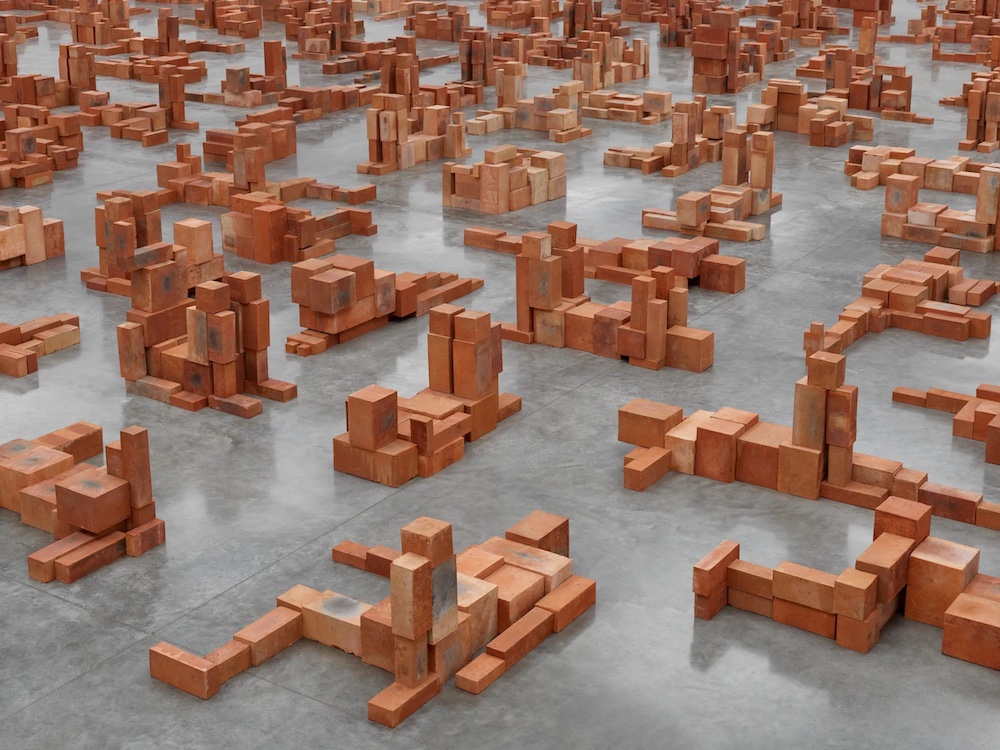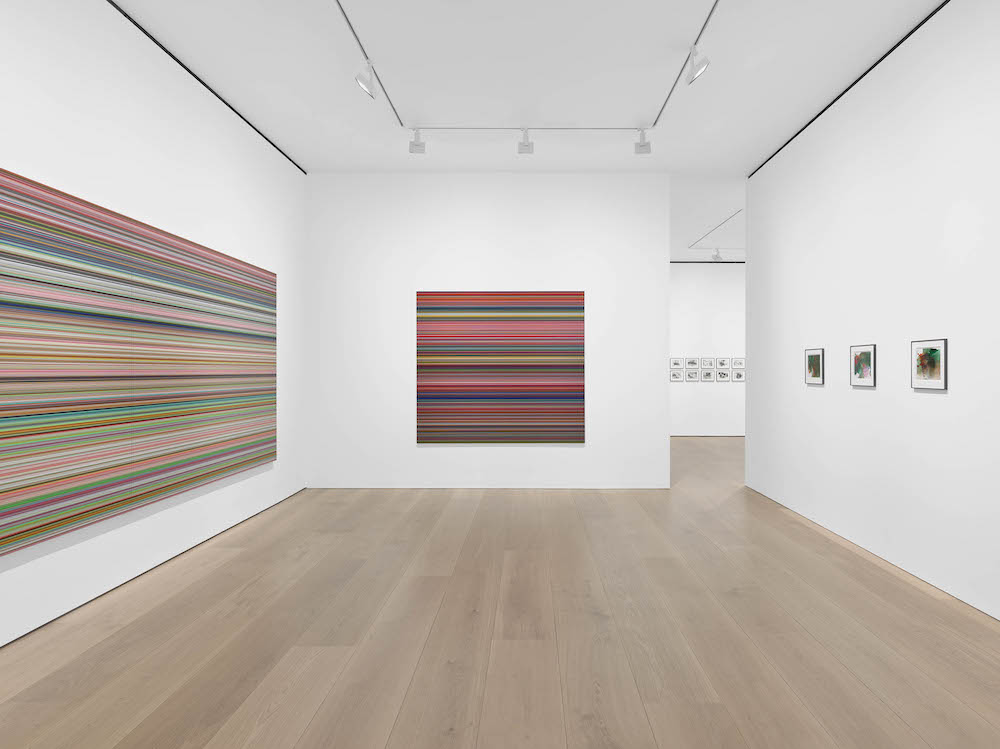“At the age of 74, Norman Swann still lives in his family home, a grand apartment in South Kensington.” Here begins the script, which accompanies Elmgreen and Dragset’s curious exhibition “Tomorrow” at the Victoria and Albert Museum. Commissioned by the V&A to create a site-specific installation for the long-dormant textile galleries duo Michael Elmgreen and Ingar Dragset, have, as usual, outdone themselves.
The enfants terribles twosome of the contemporary art scene have worked together since 1995 creating sculptures and installations, which subvert and challenge the very ideologies of the art world in which they function. Their work possesses dry wit and a tongue-in-cheek humor with light-hearted pokes at the stuffy academicism and hierarchy of the art world whilst also confronting genuine cultural issues. In 2011, their gilded sculpture of a young boy on a rocking horse, Fig. 101 from the series “Powerless Structures,” sat atop the Fourth Plinth in London’s Trafalgar Square. Its gorgeous blithe innocence, mocking and questioning the equestrian war monuments it sat amongst.
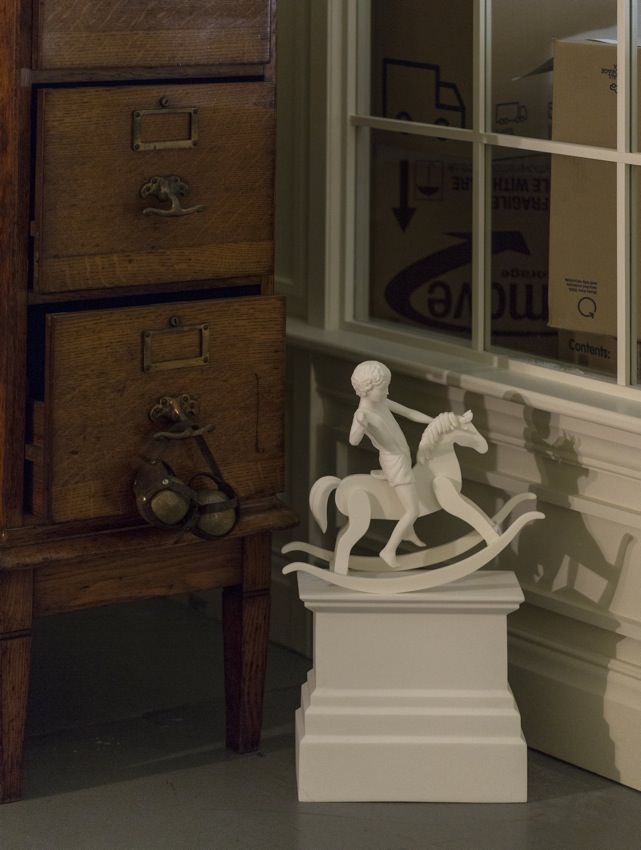
© Elmgreen & Dragset
Photo by Stephen White
“Tomorrow” at the V&A is something quite wonderful. It is a development from the artists’ 2009 Venice Biennale presentation “The Collectors,” in which they created the residences of fictional art collectors. Here, the pair has transformed the galleries into a luxury apartment – a stage set.
On entry all visitors are handed a script by a gallery assistant, dressed in a butler’s tuxedo, telling the story of the apartment’s occupant. Some sit down in the living room chairs, flicking through the script trying to piece together the story. Others poke around, picking up items in attempts to deduce their meaning and role within the puzzle. We can either read the story or make it up ourselves. Or perhaps, as is most likely, take a sneak peek at the prologue and put the rest of the pieces together, reading the 90-minute play post-visit.
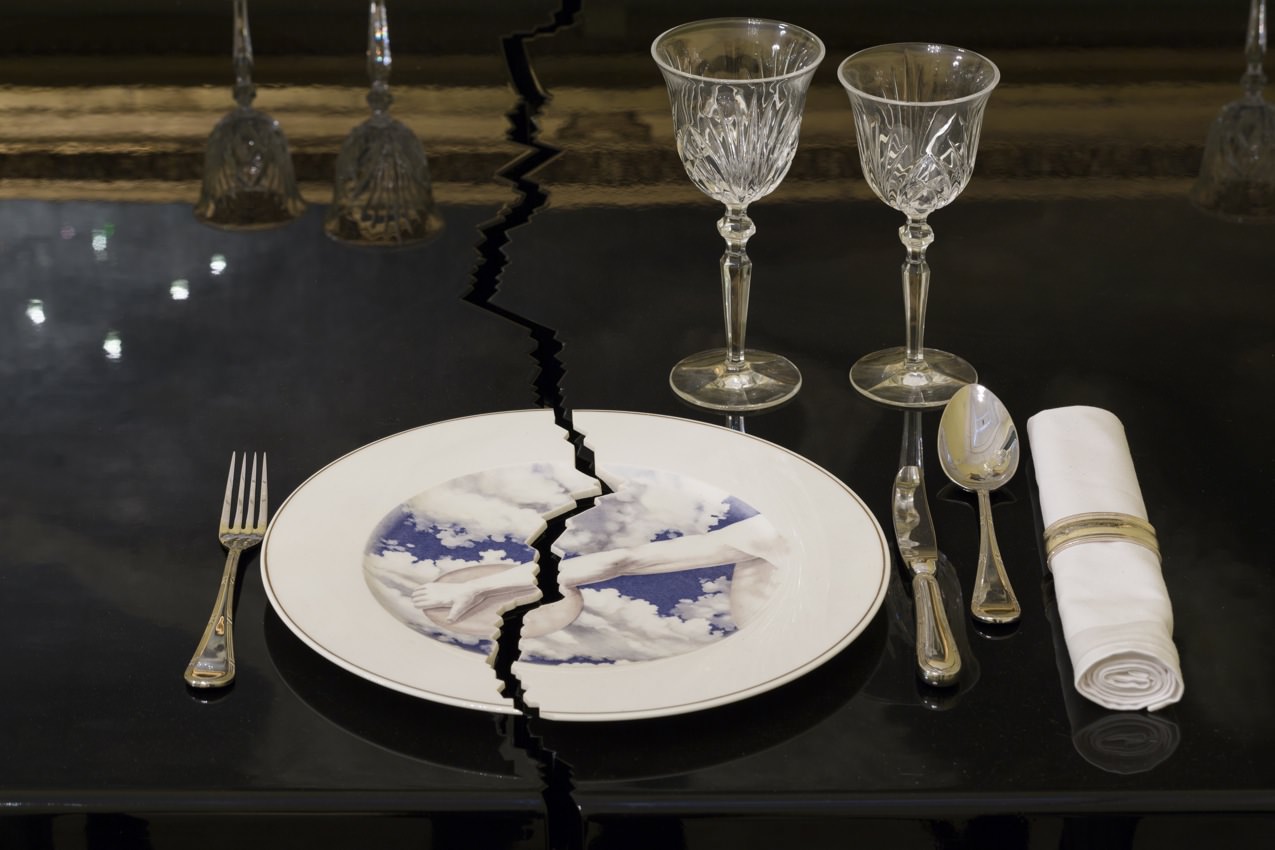
© Elmgreen & Dragset
Photo by Stephen White
The apartment, comprised of five rooms, is that of fictitious architect Norman Swann. The rooms have been decorated with items from the museum’s collection: paintings, sculptures, artefacts, and items belonging to the artists themselves like miniature replicas of their past works including the boy on the plinth, vultures that represent the art critic, and the gold housemaid, Irina (2006). There are objects Swann might have in his house like family photographs and a selection of magazines and newspapers. It’s clear that someone’s living there, the bed is unmade with slippers strewn beside it, there’s a cigar butt in an ashtray, half-realised architectural models in the study and a set of house keys in a dish. On passing the bathroom, you can hear the sound of a shower running.
The apartment speaks of old money: an Eton school trunk, photographs of sumptuously dressed relatives in furs, and an equestrian theme running throughout. Norman seems burdened by his heritage, unable to maintain the upkeep of this costly home. A bucket in the hallway catches drips from the ceiling. We are told the setting is 2013 and yet his study speaks of a bygone era – an Apple Mac computer from the 1980s and letters from 1995 occupy the study. The newspapers in the apartment date back to August 2011, with headlines of the London riots. It’s curiouser and curiouser, like playing a life-size game of Cluedo.
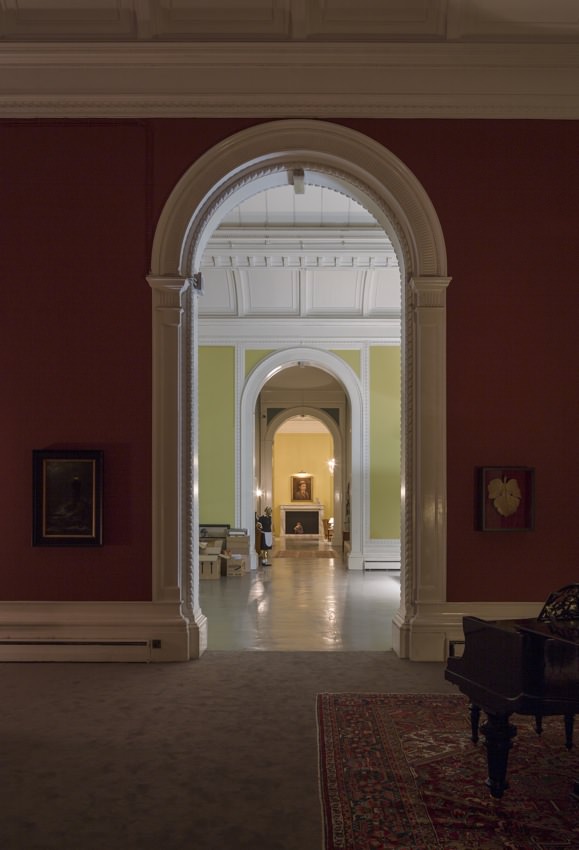
© Elmgreen & Dragset
Photo by Stephen White
Details in the apartment speak of an unhappy existence: a young boy cowers in the fireplace, dressed in his Just William school uniform, his portrait, hanging above him. The table is set for dinner but a Doris Salcedo-style seismic crack runs straight down the middle – a broken home, a terrible tragedy. The kitchen is incongruous to its surroundings, stainless steel and recently furnished. White paint licks the walls, semi-concealing the previous butter yellow. It seems Norman is moving out and the new owner has wasted no time in decorating.
There’s a strong cinematic element to the installation, the script itself references camera angles not theatre direction, and there are books in the apartment about Alfred Hitchcock and Ingmar Bergman, whose quote: “I write scripts to serve as skeletons awaiting the flesh and sinew of images,” opens the script. Elmgreen and Dragset have created their own skeleton and we, as viewers must flesh it out.
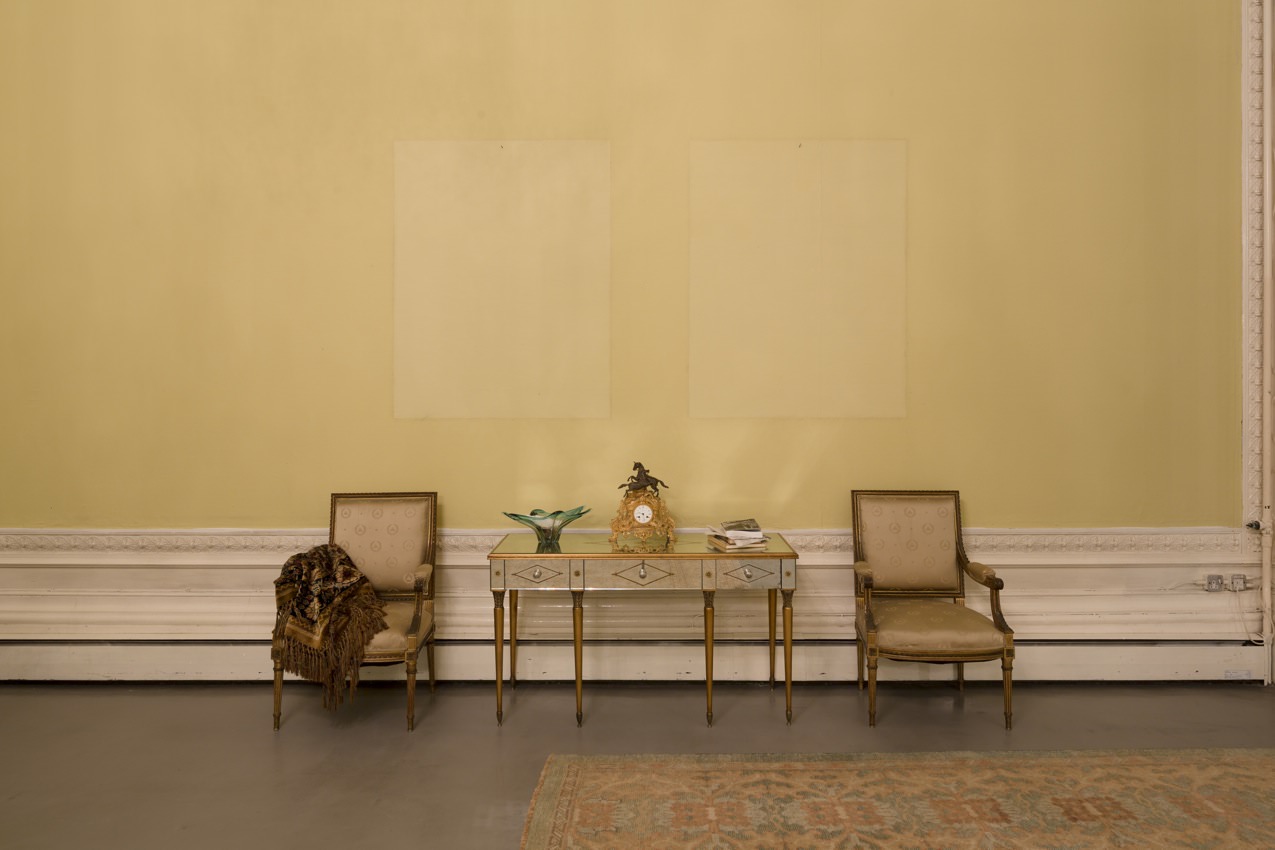
© Elmgreen & Dragset
Photo by Stephen White
“Tomorrow” pushes the boundaries of how art can be experienced. It is difficult to define it simply as art, though; it’s film, theatre, literature, and installation rolled into one. The setting of a play is shown to be integral to the story itself. It’s a joyful experience and at times a rather confusing one for regular visitors to the museum, who find they are allowed to touch every item, flick through books, sit on sofas, and even play the grand piano.
The installation has been realised with utmost conviction and dedication. There is a board outside the museum advertising the apartment: “Crown Property – This luxury development offers our clients the opportunity to be part of London’s imperial history.” Those who aren’t at the museum to see “Tomorrow” will not notice the reference. And yet, the story itself is a bleak one and it ends in tragedy. It doesn’t matter, though and it is not the point. We can create our own characters, our own story, and our own ending. This is Tomorrow.
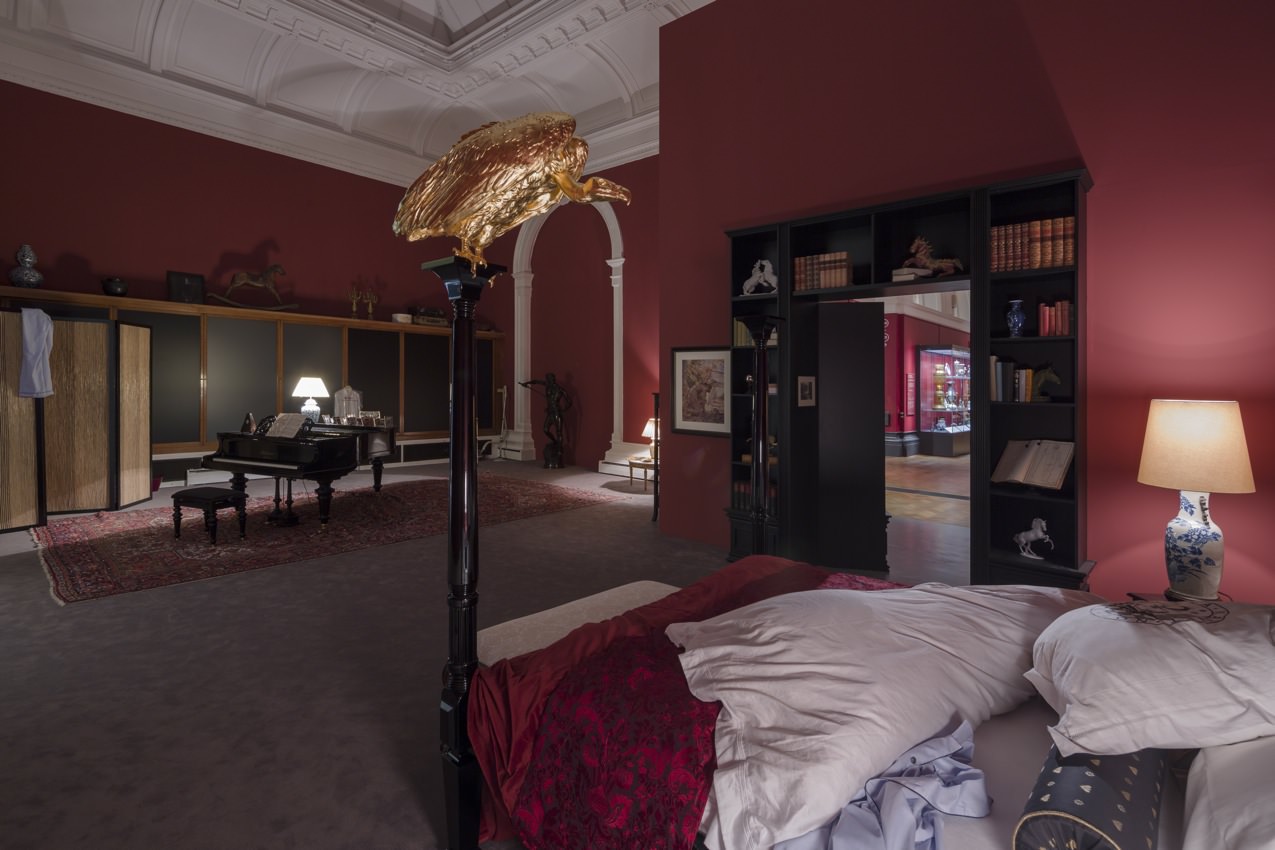
© Elmgreen & Dragset
Photo by Stephen White






